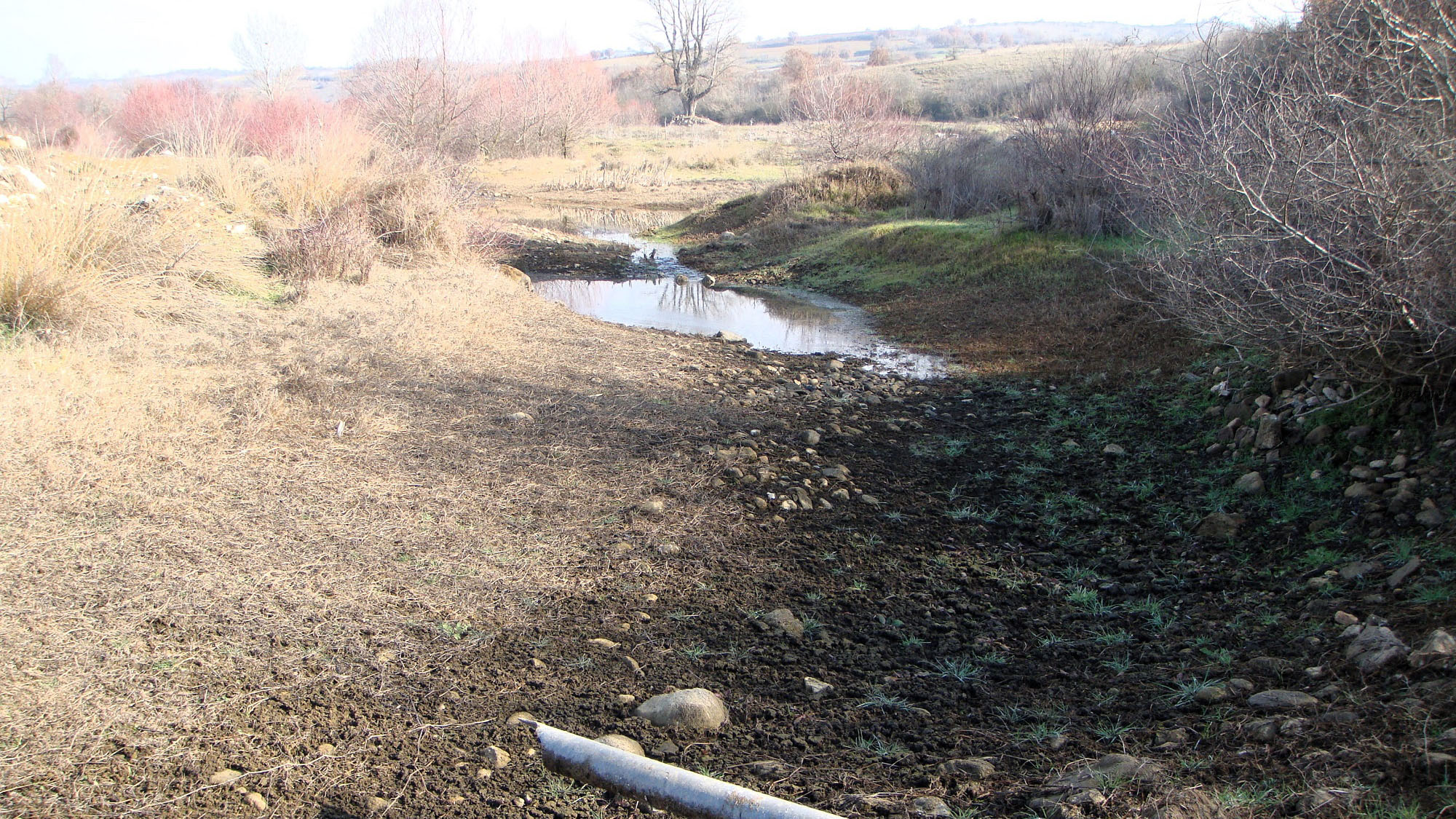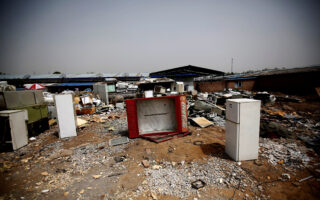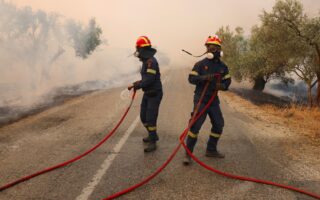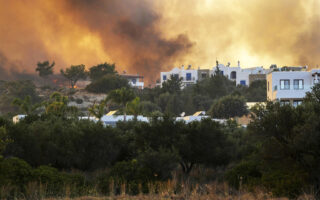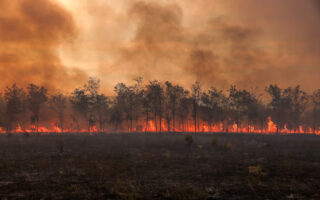Greece’s rivers running dry, lakes disappearing
Kathimerini reaches out to experts to find out why Doirani, Vistonida and Pikrolimni and the Gallikos in the country’s north are dwindling
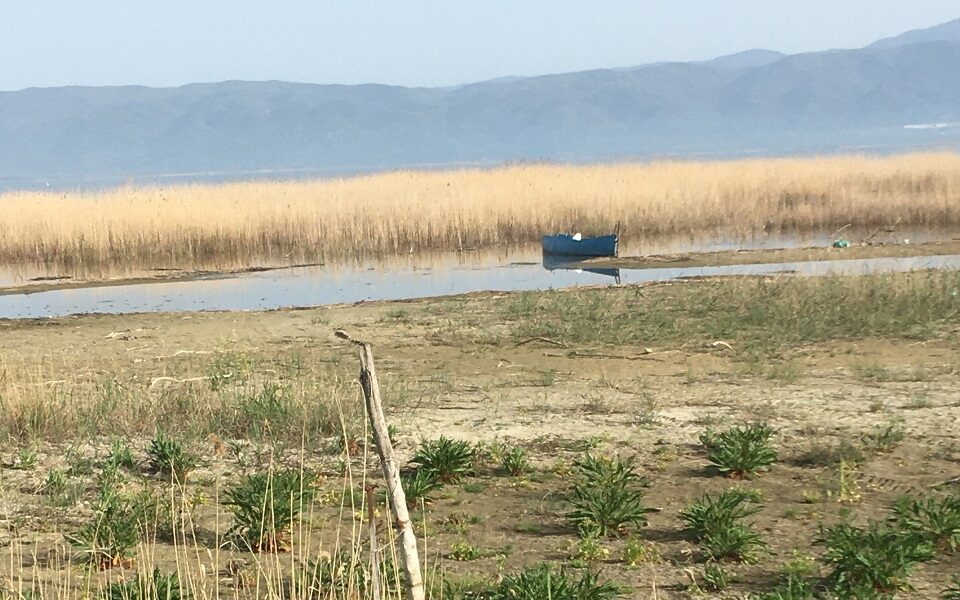
The sole resident of Kerasia, at 600 meters on Mount Papikio in Rodopi, has been observing the changes to the village’s river since the 1980s. “We used to hear the Aspropotamos roar. Now it’s gone quiet. The water level has dropped from a meter to 8-10 centimeters,” retired lawyer Sotiris Poupouzis tells Kathimerini, speaking about one of several rivers that feed Lake Vistonida in neighboring Xanthi.
The Aspropotamos is just one of dozens of water bodies in northern Greece sounding the alarm, victims of reduced rainfall, less snowmelt and higher temperatures.
“We had a few showers in March but they can’t fill the artesian basin and feed the river. We didn’t even get any snow in the village this year,” says a troubled Poupouzis. “Even Papikio’s summit, at 1,460 meters, got no more than 10 centimeters and that melted really fast because of the heat.”
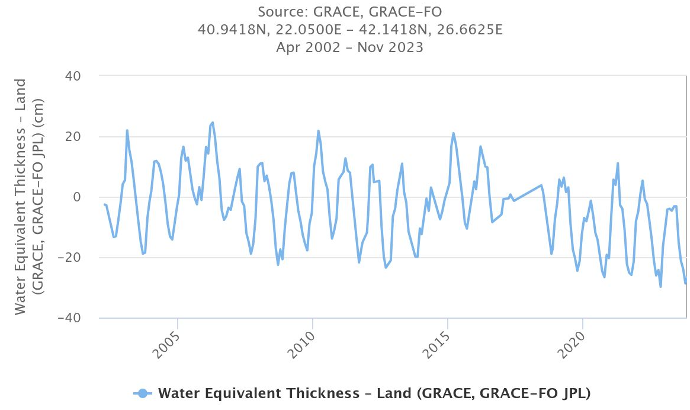
Athansios Loukas, a professor of hydrology and water resources at the Aristotle University of Thessaloniki, has made similar observations using data from the Hellenic National Meteorological Service (HNMS).
“Water bodies in Central Macedonia have been in serious crisis for the past two, two and a half years,” he notes.
“If we assign danger levels (with red being the highest, orange being just below that and yellow being moderate), we get an empirical idea of the risk level in northern Greece. Doirani and other smaller lakes are in the red, for example. The Strymonas River and the Lake Kerkini reservoir are orange, as are the Prespes lakes. The Nestos River and Lake Vistonida (yellow-orange) are potential problem spots, while it is not unlikely that the Evros River (yellow) will face difficulties later in the year, even though something like that is not evident right now,” he says.
Alexandra Gemitzi, a professor at the Democritus University of Thrace’s Department of Environmental Engineering and head of a drought observatory for the region of Rodopi, stresses that drought does not become apparent at once, as do floods and fires. It is, she says, a “sly enemy” that becomes apparent only after causing significant and possibly unmanageable damage.
‘When the lake shrinks, the vital habitat of aquatic organisms shrink and fish lose their natural breeding grounds’
Gemitzi laments the absence of a coordinated, centralized effort to map this alarming phenomenon, noting that it all comes down to the efforts of a few scientists carrying out pertinent research.
On the upside, modern technology and satellite imaging are making the task easier. One such tool is a NASA mission mapping global soil moisture. Its satellite images show negative anomalies in many parts of the country during the spring of 2021, 2022 and 2023, compared with the averages of 2015-2023. The image of Evros from the spring of 2023 is especially telling, particularly since a devastating fire broke out in the area the following August, decimating the Dadia Forest.
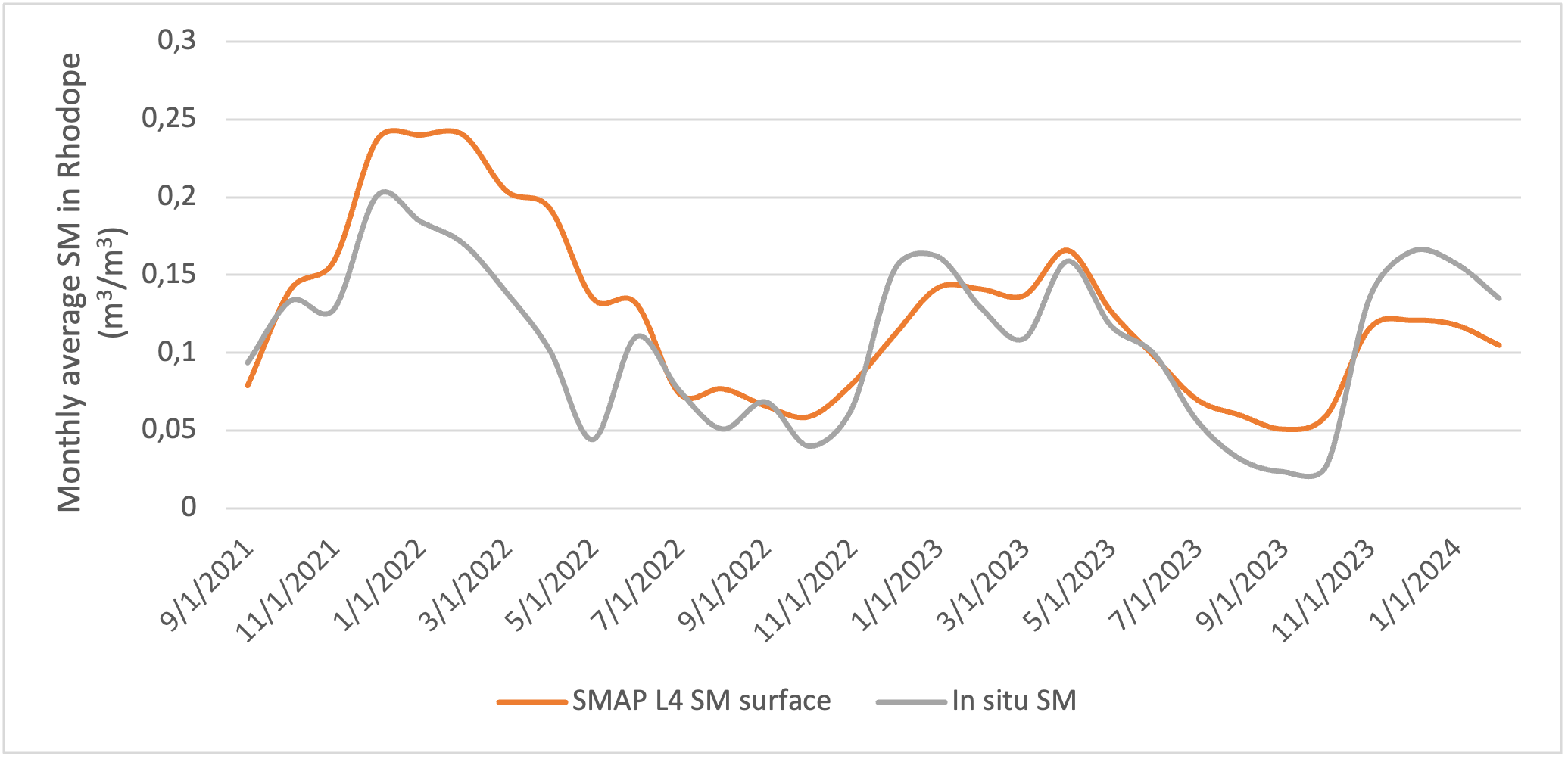
The Democritus University’s measurements in Rodopi show a similar pattern of a steady reduction in ground moisture from 2021 onward. Though the area had not been prone to wildfires in the past, it experienced destructive blazes in October 2022 and also last August.
Satellite images mapping vegetation productivity, or the rate at which plants gain new organic matter, also paint an alarming picture, which impacts overall biodiversity but also has direct consequences for agriculture and livestock farming.
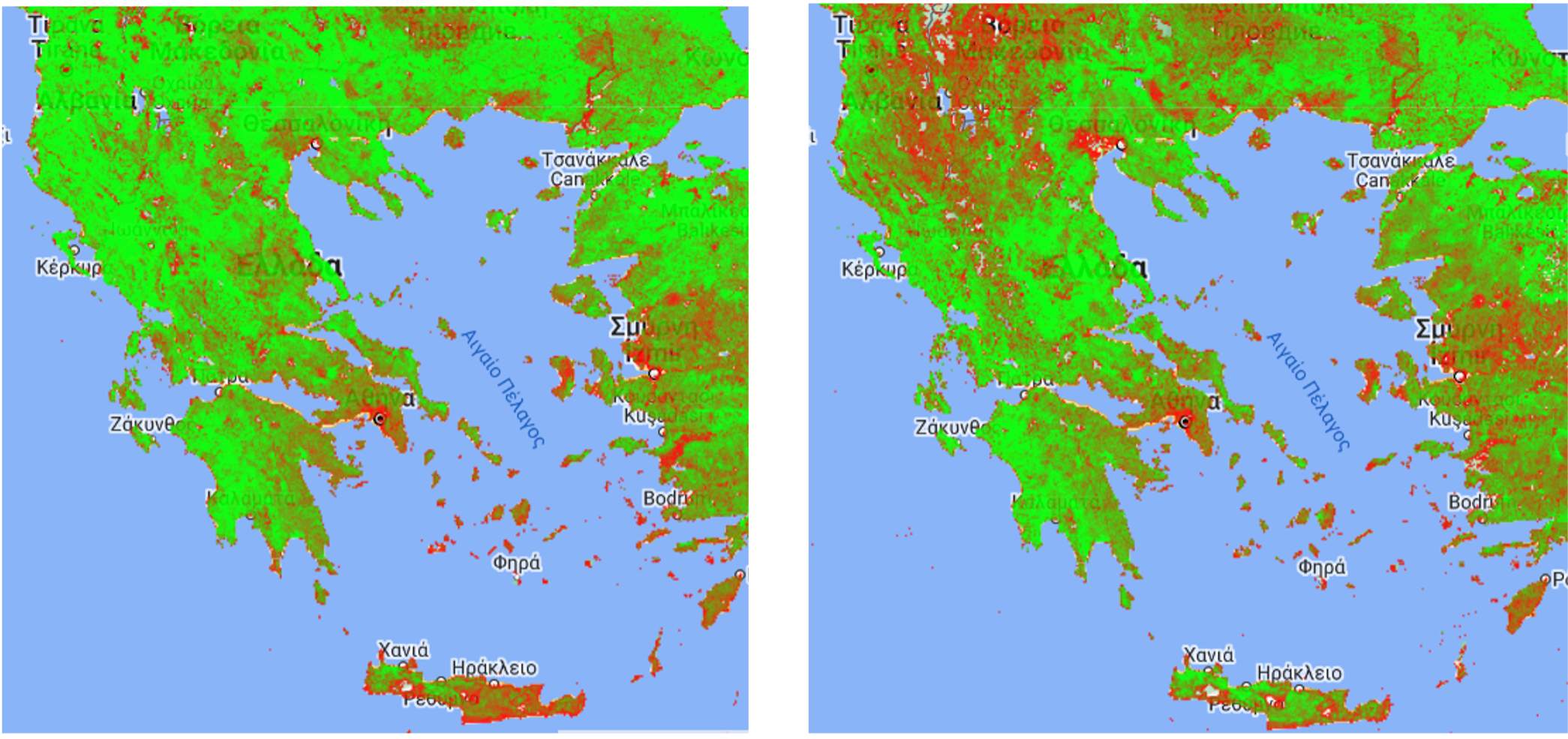
Vistonida
Straddling the border of Xanthi and Rodopi, Vistonida is a brackish lake fed with fresh water by the Aspropotamos and saltwater by the Kosynthos and Kompsatos. The former’s input is falling due to decreased rainfall, and the lake’s salinity is rising, upsetting the natural balance.
The president of the Vistonida Fishermen’s Association, Giorgos Gilis, knows exactly what the impact is. “The lake has shrunk from 6,500 hectares to 4,000 and from a depth of 4 meters in parts to 2.5 meters. The water evaporates when we hit temperatures of 40, 41 and 42 degrees Celsius and when we have floods, they fill the lake with deposits that pile up. And the rain is either too much or not at all,” he says.
“These sudden changes in the lake’s environment have also led to the invasion of that ‘devil’ which loves warm waters, the blue crab, and it’s killing us. There is no more carp or eels; the sand smelt yield is also dropping constantly. When I joined the association in 1992, we’d catch as much as 300 tons of sand smelt. Last year we caught 30 tons from 80 tons the year before that.”
Accelerated heating
Indeed, northern Greece has been heating up faster than other parts of the country in the past 30 years and leads the trend of increased days of drought, Stavros Dafis, a physicist-meteorologist who works with the National Observatory of Athens’ Meteo.gr and Climatebook.gr services, tells Kathimerini, pointing to findings from the European Union’s earth observation program, Copernicus.

According to Dafis, 2023 was a climate change landmark for Greece, but in northern Greece in particular, an annual assessment published by Climatebook.gr found the area to have the biggest divergences in the entire country.
“Northeastern Greece had much fewer days and levels of rainfall than the 30-year averages, while the mountains of Macedonia and Thrace saw the biggest reduction in the number of days with snow cover and in the thickness of the snow cover, while the snowfall is now limited to rising altitudes,” he says, noting that similar problems have been reported across the Balkans, which also means less runoff and snowmelt benefiting Greece.
The Aristotle University’s Professor Loukas points to HNMS data to note that this winter was the warmest Greece has experienced since 1960. “The average temperature in the winter of 2023-2024 was 2.3 Celsius higher than in 1981-2010 and 0.2C above the winter of 2020-2021, which had been, until now, the warmest on record since 1960. The biggest divergences were seen in northern Greece and particularly in Thrace and the islands of the northern Aegean,” he notes.
Doirani
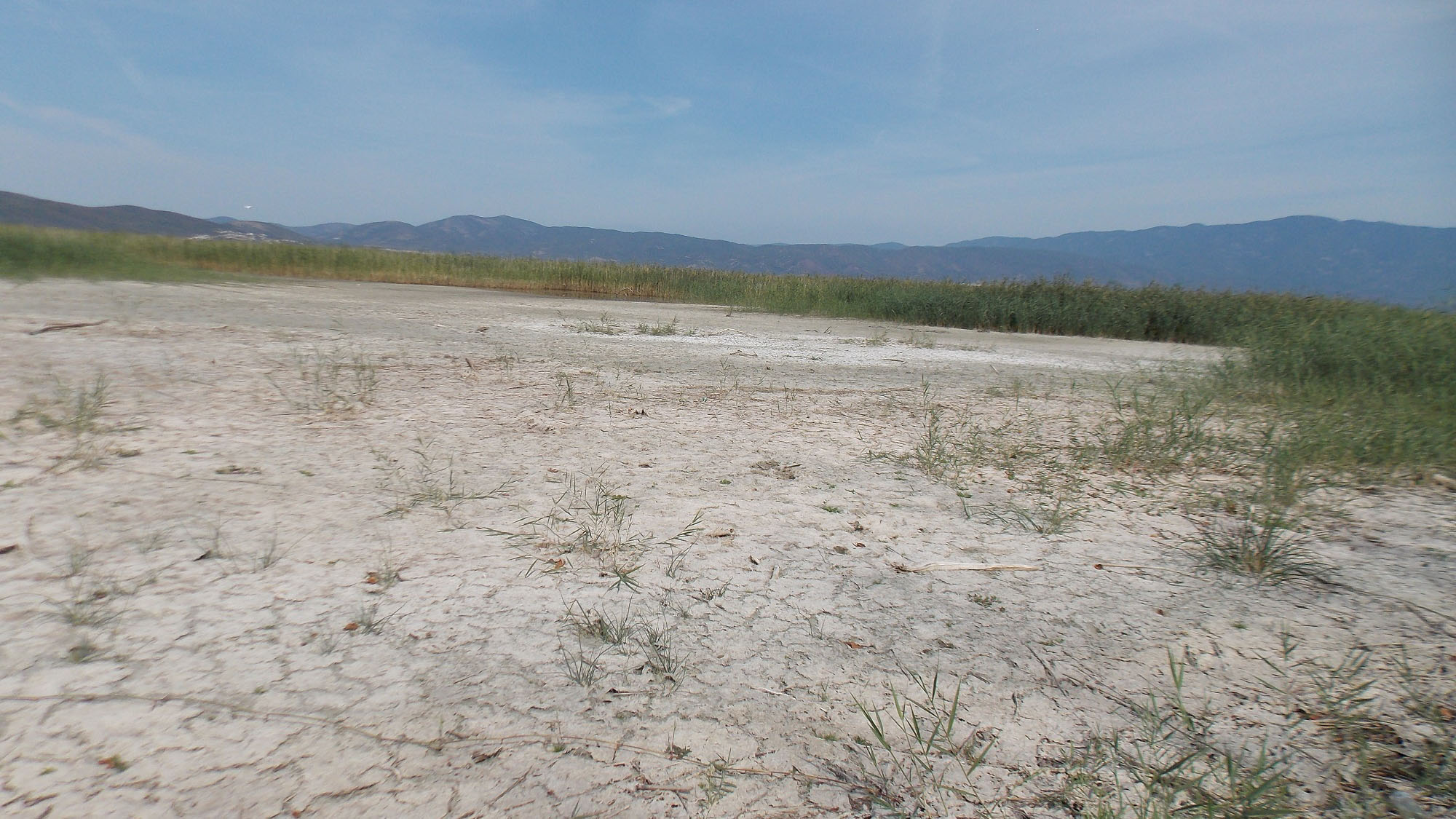
Split between Greece and North Macedonia, Lake Doirani (Dojran), one of the most important wetlands in southeastern Europe, is also causing alarm. According to an ichthyologist with the Kilkis Regional Authority, Yiannis Michailidis, Doirani’s waters have receded 20-30 meters from the shore on the Greek side in the past year alone. He adds that while a similar problem was observed in 2012-2013 and the lake was able to recover well in 2018-2019, the recent ebb started in 2020 and, given the weather so far, does not look promising.
“When the lake shrinks, the vital habitat of aquatic organisms shrink and fish lose their natural breeding grounds, which are close to the shore. We are also seeing problems with the coastal biodiversity. And we’re talking about a lake that is part of the Natura network, a habitat for the Dalmatian pelican and the pygmy cormorant, both endangered species. If the phenomenon persists, these species will be in more trouble,” he warns.
On the Kilkis border with Thessaloniki, Pikrolimni, the only saltwater lake on continental Greece, is also in a shocking state, having not seen any precipitation of note over the fall and winter, when it is usually dry only in the summer.
Agriculture
The impact of climate change is, perhaps, most directly felt by the agricultural sector.
According to an agronomist working for the Kilkis Regional Authority, heavy showers and storms in the summer and fall of 2023 stoked fungal infections and prevented many crops from growing properly. But the dry and warm weather of 2024 so far has also been equally destructive, notes Vassilis Ioannidis.
“Farmers are worried about the small quantities of water that their fields have received so far. Because of the high temperatures, crops are coming early, which makes them vulnerable to unusual weather. At the same time, demand for water is increasing, just as supply from natural sources like the Gallikos River, Metalleio and Doiranis lakes, and the small dams on mounts Paiko, Belles and Krousia, is shrinking. The situation will probably get worse once temperatures rise further,” he notes.
